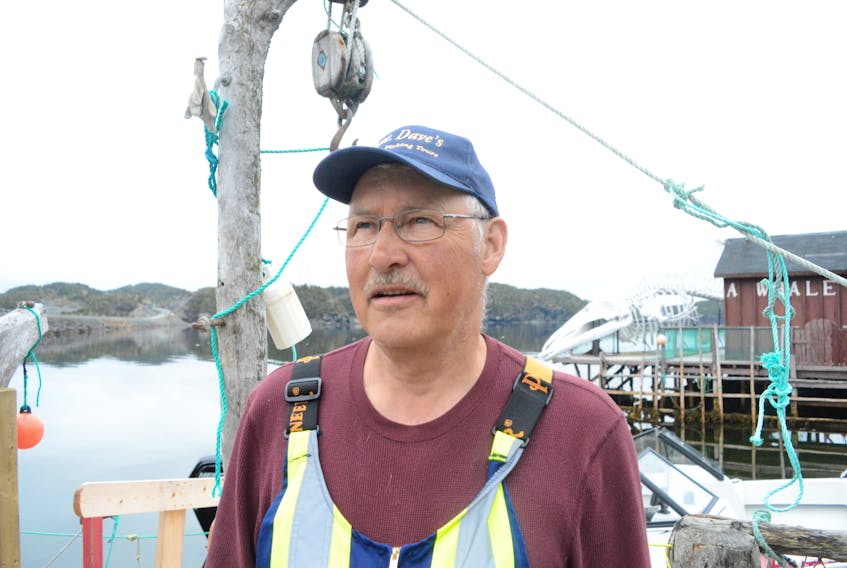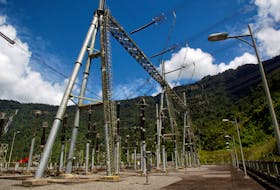With hefty nets, healthy livers and plump fish, harvesters across the central region are seeing signs of a healthy and rebounding cod fishery this summer.
But fishers and union representatives agree, the most pivotal mark to grow this future fishery is not in quantity but in producing a quality grade codfish.
“The only thing that’s going to do it for us is quality,” Salvage harvester Gordon Janes said. “Norway and Iceland got it down to a science, and the fish we put out in comparison to them is very little.
“So if we don’t look after quality, we’re not going to be a player at all.”
In recent years, harvesters have been encouraged in a variety of techniques for producing a fresher and higher-quality fish. These techniques include an emphasis on more fish caught through hook and line, decreasing the amount of time harvesters leave out gillnets, pulling out the fish’s gills to drain the blood from its fillets, and gutting the fish and putting it in ice immediately after it’s caught.
The Standing Fish Price-Setting Panel – Cod Fishery 2018
The 2018 report by the Standing Fish Price-Setting Panel detailed a list of guidelines, factors and determined value for the quality and pricing of codfish in the province.
The provincial government panel is meant to facilitate negotiations between different parties of the fishery, such as processing companies and the Fish, Food and Allied Workers Union.
From July 29, 2018, the report lists the pricing for cod for grade A fish at 83 cents a pound, grade B at 40 cents a pound, and grade C at 20 cents a pound.
While cod harvesters are now undertaking these steps across the board, many are upset that the grading for their fish does not happen when they bring their catch into the dock. Instead, the fish is graded for quality after it is shipped to a processing plant and graded just before it is processed.
Undertaking the steps to produce quality fish, Dave Boyd of Twillingate says he has still on occasion received poor grades on his single quota. He says it’s a common grievance around Twillingate and New World Island, and he worries that the delays in shipping and processing may be a leading factor in these poor grades.
“It’s discouraging if you’re trying your best and you’re not getting paid for it,” Boyd said. “Everybody’s got the horror stories about grading, fellows getting 40 per cent grade A and 40 per cent grade C. And when you’re taking it of the nets alive, pulling their gills, putting it in ice — I don’t know how you can do it much better than that.
“It should be graded on the deck when the fish is brought in.”
Fisherman Rodney Froude of Kettle Cove agrees with Boyd that grading the fish on the dock would be highly beneficial for harvesters. He says he and many other harvesters are often surprised when lower grades are received.
“There’s more fish caught in people’s nets than ever seen before, and the fish was never any thicker. But it doesn’t make much sense to put all your effort into it if you can’t get a better price.”
— Dave Boyd
With the delays between shipping off their catch and getting their grade — which is around 48 hours — Froude says harvesters don’t feel they have much of an option to dispute the results.
“You can handle your fish the same way every day, but one day you’ll get a good price and the next day you can get the lowest price,” Froude said. “It would be better if it was graded right at the wharf. If they can come to your face and say it’s a poor grade because it’s bruised, well you can deal with it then.”
Fish, Food, and Allied Workers (FFAW) Union-rep Roland Hedderson says this issue came out during the negotiations that resulted in this year’s Standing Fish Price-Setting Panel report. The report set pricing for cod based on quality grades and encouraged better prices for harvesters.
- Want in on the debate?
- Write us a letter to the editor and email it to [email protected]. Be sure to include a name, address and daytime telephone number where the author can be contacted. Letters should be no more than 300 words.
“We sat down with the buyers during those negotiations, and they felt that what goes through the plant is what ultimately counts, not what’s brought into the wharf,” Hedderson said. “Whereas the fishermen like to differ on that. They feel that they brought it into the wharf in a good condition, so it shouldn’t be their problem after that.”
Hedderson stresses that the quality of fish in the province has escalated compared to what was caught in the 1950’s to 1980’s. But particularly this year, Hedderson says that the quality grade of fish appears to be a bit down for some harvesters.
He says the abundance of fish and the hot weather this year are likely playing a role.
“Compared with what was brought up in the moratorium, it’s not the same fish at all,” Hedderson said. “The quality of the fish brought into Newfoundland and Labrador has increased tremendously. It’s been a bit lower so far this year, it seems hook and line is not so viable with the fish glutted with capelin, so there’s more reliance on gillnets.
“And when you can set out a couple of nets and get several thousand pounds out of it, you almost got to be a superman to be able to clean and gut all that fish and get it into a tub of ice in a short period of time.”

According to Hedderson, so long as the fish is kept in ice, it can stand up in quality despite the long distances and hours it can take to get it graded and processed.
“Part of the fishes grading is texture, which is the softness of the fish. That seems to have been a problem the past few weeks with the hot weather,” he said. “If the temperature goes up, the fish is prone to softness and other issues, but so long as that chain of temperature doesn’t get broken, the quality can stand. We have fish being shipped in from as far as the Northern Peninsula still getting top quality.”
Winston Dearing of Moreton’s Harbour has received good grades on his fish throughout this summer, receiving an average of 81 cents, just two cents below the top quality. Still, he agrees with other harvesters sentiments that it would be much fairer to the fishermen if the grading was not delayed until processing.
“For the most part I’ve been pleased, but I’d sooner see it graded on the wharf just the same,” Dearing said. "I’ve been hearing lots of stories out of Twillingate of people getting bad grades. Anything you sell, you ought to know right away what you’re going to get for it.”
Hedderson wishes the resources were there to do grading on the dock, but he says it is not viable under current circumstances.
“I sympathize with people who want to get it graded on the wharf, but the cost is just prohibitive and with a lack of manpower, it all adds up. It’s going to be more than the fish is worth,” he said.
While overall the quality and role of cod in Newfoundland and Labrador’s fishery is rising, Boyd believes it may be discouraging for the future if harvesters feel there is a risk that their efforts producing quality fish will not translate on their pay cheques.
“There’s more fish caught in people’s nets than ever seen before, and the fish was never any thicker,” said Boyd. “But it doesn’t make much sense to put all your effort into it if you can’t get a better price.”
RELATED
Northern cod stock declined over last year; scientists urge minimum fishing efforts









